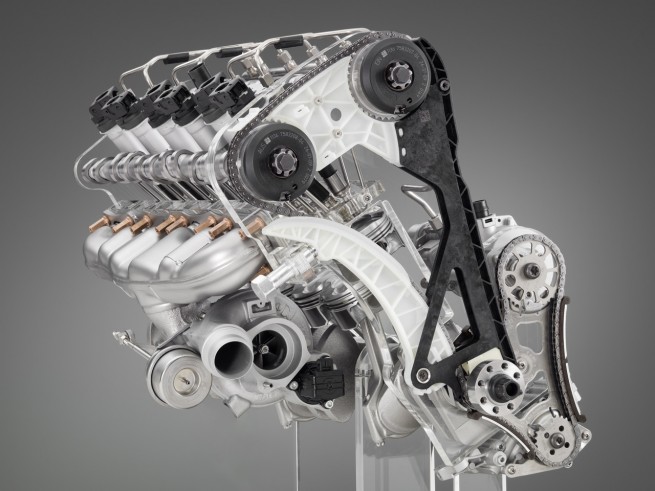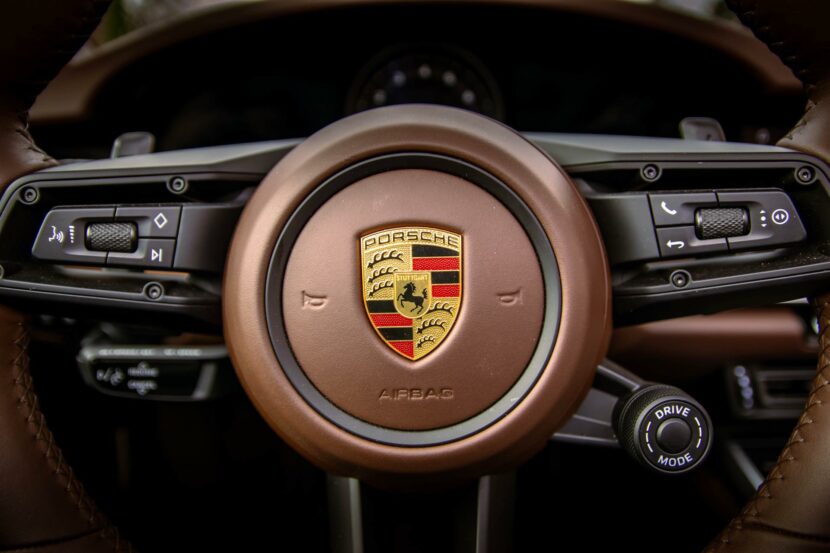In the last ten years, BMW has successfully proven that it can generate a significant amount of controversy regarding its way of business and car making. Just remember how much opinions the company has polarized with their stubborn but forward thinking decisions; the first X5, 2002 7 Series and the iDrive system, flame-surfacing design of the first Z4 and Bangle-styled 5, 6 and 1 Series, EfficientDynamics… All of these were subjects of numerous debates and have spawned both worship and hate, but also have skyrocketed BMWs sales and profit and have served as an exemplar to other manufacturers, resulting in many attempts to imitate the original BMW creations.
It seems that now nothing has changed: in May, BMW released a Gran Turismo version of the 5 Series, which generated negative comments about its distinctive and unusual styling and yet again, Audi has revealed several teasers of their upcoming A5 Sportback while Mercedes-Benz announced that the new E-Class family will receive a similar styled model. Interestingly enough, the two rivals feature the same dramatic sloping rear end and a sedan-like roofline.
Few days ago, BMW has released official pictures and data of the new compact SUV/crossover X1 and again, ad least two years ahead of the upcoming Spain-built Audi Q3.
As expected, rumors about the new Mercedes-Benz BLK began to spread.
Meanwhile, another novelty from BMW resulted in furious reactions, but this time from its own fan base. As you might suspect, the decision to make small turbocharged engines was not well received by the purists and enthusiasts. However, while naturally aspirated engines provide better control and more natural feel, the efficiency and weight of a turbocharged engine is crucial for the future development, which requires more power and less consumption, likewise less CO2 emissions.
What is even more interesting, turbocharged engines are actually BMWs heritage and tradition, and to be even more specific, BMW was the first European car manufacturer to offer a turbocharged car.
The BMW 1500 introduced in September 1961 at the Frankfurt Motor Show was truly a ground braking car for the time. With its rear wheel drive, fully independent suspension, MacPherson struts in front and front disc brakes, it was the first BMW that brought the company’s traditional focus on driving pleasure in a more compact and economical package. And while the 1500 had expanded BMWs reputation as a maker of true drivers cars worldwide, the next model of the “New Class” family had only secured it.
The 2002 is the one of BMWs most important models and today is considered to be the first sport sedan, a class that was later reinvented by its successor, the BMW 3 Series.
BMW started experimenting with turbocharging in the beginning of 1970s and the result came in 1972, a turbo version of their four cylinder engine, fitted in the Paul Bracq designed BMW Turbo Concept. A year later, the Turbo made its production debut in the BMW 2002 Turbo.
Performance figures were impressive: the 2002 Turbo produced 170 hp at 5800 rpm.
It was capable of 0-100 km/h in 6.9 seconds with a top speed of 209 km/h while the turbocharger kicked in at about 3500-4000 rpm.
Although turbocharging gives more power without sacrificing too much efficiency, it does not deliver the power as smoothly as a naturally aspirated engine. This is commonly referred to as turbo lag; the complete lack of power below a certain rpm. And when the turbo does start to work, it usually does so with a big kick, resulting in unbalanced driving characteristics of turbo cars.
The 2002 Turbo’s tricky handling was a direct result of the turbo lag, for which the 2002 Turbo is a school book example today. Below 4000 rpm the 2.0 engine’s power was minimal, but after 4000 rpm power boost came very sudden and especially in corners required the driver’s full attention.
Original 2002 Turbos featured a front spoiler with the script “2002 Turbo” written backwards on it. The idea was that when a driver ahead looked in his or her rear view mirror at an oncoming 2002 Turbo, the backwards written script would appear forwards to them and they would know that it was no ordinary 2002 behind them.
Production stopped after only 1,672 models were built, 1049 cars are made in Chamonix white and 615 cars are made in Polaris silver.
The reason it was a slow seller was not because it was a bad car, but because it was the wrong car for the time, the first oil crisis in 1973. All performance cars were out of favor due to soaring fuel costs, meaning that buyers wanted economy, not outright power and performance. Exactly that helped the 1975 released 3 Series, which had doubled BMW’s sales and its dominance in the sports sedan area.
Apart from rear-wheel drive and perfect 50:50 weight distribution, a hallmark of the BMW brand is also the straight-six engine, renowned for its smooth power delivery and fuel efficiency. Because the turbo lag would disturb the famous smoothness of the inline six, BMW used turbochargers only in several Formula 1 race cars in the 80‘s.
Nevertheless, an exception was made for the special edition of the 7 Series between 1979 and 1986. The 745i model featured a specially prepared 3.2 L straight six and a turbocharger producing 10 psi of boost. The car could be ordered with numerous exotic options for the time, such as heated front and rear power reclining seats and leather covered cellular telephone.
With the exception of the mentioned 745i, after almost 35 years, under the code name N54, the new turbocharged engine debuted in the 2006 BMW 335i Coupé. The N54 produces 306 hp (228 kW) and 400 Nm of torque using two small low-pressure turbochargers to remove the turbo lag. For this reason, the turbo pressure is only 0.4 bar, as the goal was to offer the same silky smooth feel as with naturally aspirated straight sixes. As a proof of this, the engine received high praise in all reviews and has been awarded with the most prestigious award in the industry, the International Engine Of The Year Award, for two times.
http://www.youtube.com/watch?v=aHj0zbhjLZI
In the last few months, BMW has also presented several turbocharged engines: a twin-turbo V8 being world’s first power unit with a common exhaust manifold encompassing both rows of cylinders and featuring Twin Scroll Twin Turbo Technology, found in the upcoming M versions of X5 and X6 SUVs and a similar version used in the BMW 750i. However, the 7 Series won’t stop there, as BMW released information about their new V12 biturbo engine that will power the 760i which will be released in 2010.
A new line of straight six engines will also be released upon the launch of the new 5 Series GT, the petrol N55 (adds High Precision Injection, Valvetronic technology and twin-scroll turbocharging) and a biturbo diesel, which is seven per cent more powerful while being more fuel efficient.
Clearly, BMW pushes engine technology development more than any other manufacturer, with unbeatable 47 Engine Of The Year Awards as a sheer proof.






































































